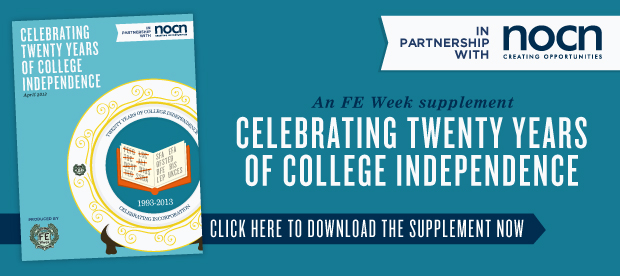When the Association of Colleges helped give 31 enterprising colleges a permanent presence in India earlier this year, the initiative required a level of customer service to match that of the best export companies.
Education export services are already worth £14bn a year to the UK and are expected to rise to at least £22bn by 2020. So it was no surprise the trip to India involved Skills Minister Matthew Hancock helping, in his own words, “co-ordinate the government’s support for education as an export industry”..
And yet, 20 years ago, before Incorporation, colleges were largely characterised as public institutions focused on qualifications with little or no customer service, communication and marketing.
Jim Horrocks, former principal of Barnsfield College, recalls his first year in post when he observed growing queues waiting for a door to be opened at 2pm to process people for enrolment.
Something had to be done and the responsive college programme led by the FE Staff College, Blagdon, was designed to encourage colleges to prepare for market-led change that exploded during the 1990s.
In those early days, there was often something of a wish and a prayer in the operations”
Gazelle Group chief exective Fintan Donohue, (pictured) a member of that first team, says: “The responsive college programme promoted the idea of student as a customer and we spent much time with colleges, helping them recruit, train and support marketing managers for the very first time.”
The main legacy is seen in the Responsive College Unit (RCU), which continued as an independent agency after Incorporation, says Peter Davies, marketing consultant with the Policy Consortium.
He had helped create the College Marketing Network in 1987, which was crucial to supporting the RCU success and is still going, with around 180 members and an award scheme and annual conference in November.
But Incorporation brought a considerably more focused approach. “My impression of the marketing staff who attend is that their professionalism and competence has improved out of all recognition compared with the early days, and that the best practice in the sector now would be outstanding among any service organisations with comparable budgets,” says Davies.
Analysing customers and colleges in the 1999 publication Managing External Relations in Schools and Colleges, Davies points to the key change as that of a move from promotion to marketing. Far more precise market research was needed to inform decisions about curriculum development, stimulated in 1994 by the legal requirement on colleges to produce strategic plans.
“As a consequence, colleges adapted their management information systems (MIS) for the purposes of marketing intelligence, which had not been a primary consideration in their original design,” he says.
The workload on managers was incredible, says Carole Overton. “I was assistant principal at Deeside College. My responsibilities included marketing along with MIS, funding, planning, external work from companies, admissions, student services and multimedia learning and a few odd extras like nurseries. How I did all that I don’t know,”she says.
In those early days, there was often something of a wish and a prayer in the operations. Andrew Morris, formerly director of marketing and development at City and Islington College, recalls: “Bizarrely, I became director of marketing and development in my college with no background in the former. Someone had to do it.
“In fact I read about Ruth Silver’s approach at Lewisham College in a marketing magazine, took her advice and hired in a Blue Chip company. Certainly the quality and punch shot up; then it was taken back in-house and then the capacity and budget increased enormously with external recruitment — and the level of sophistication we see in FE today.”


Your thoughts